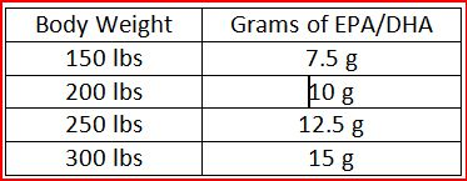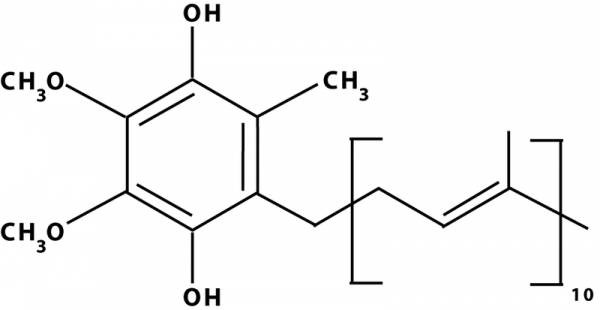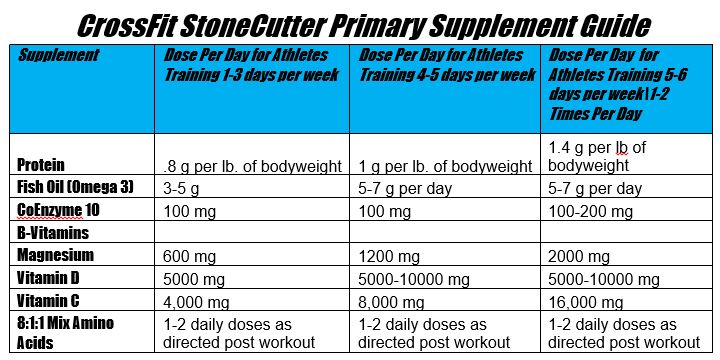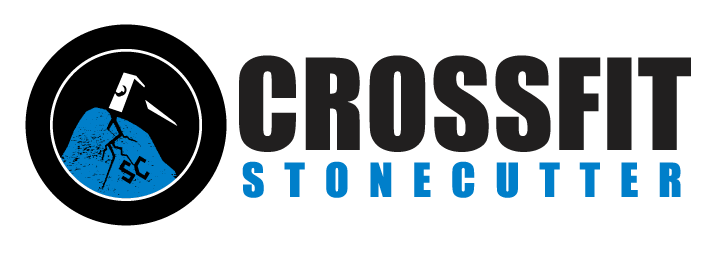There is so much marketing and research out there on supplements – what to take, how much, who needs what – that it can be confusing to sift through and narrow down. The information we have compiled below should help you get a better understanding what you should be taking that you aren’t, what you are taking that you might not need to be spending money on, and of the quality of the current supplements that you are taking, how you can improve your regimen, and correct dosing and timing for your athletic goals.
Step one is to make sure that whatever supplements you are purchasing are of the highest quality since you are going to be putting them into your body. Just like California restaurant grades, there are different grades given to supplement (all pharmaceutical) companies depending on their practices, purity, environmental friendliness, and product quality. The same goes for supplements. Current Good Manufacturing Practice (cGMP) is the gold standard and Good Manufacturing Practice (GMP) is just below it but there is a world of difference between the two as GMP is a mandatory aspect in pharmaceutical manufacturing – it is the bare minimum. cGMP a step above – companies with that seal are going above-and-beyond the call of duty to make sure you are receiving the highest quality, most environmentally friendly, and bioavailable (useable by your body) supplements possible. You can check your labels or the company website to find out which seal they hold.
There are literally thousands of supplements out there for consumption and you could give a sound argument for the inclusion of many of them into your regimen. Unfortunately, this is not cost-effective or conducive to a happy life. Who wants to spend the entire day popping pills to ensure the proper timing for absorption and use by the body? We have narrowed down the list for you here to the Top 8 supplements for Athletes, otherwise known as your primary supplements. Start with these and only these to see how you feel. If something’s still missing, then consider adding supplements particular to your situation or case (secondary supplements).
Top 8 Supplements for Athletes – Primary Supplements
- Omega 3 Fatty Acids (Fish Oil)are probably one of the most commonly used supplements on the market today and for good reason. When high quality fish oil is taken in large enough amounts, it provides the biggest bang for the buck as far as supplements are concerned. Most people know about the improved cardiovascular health and function, improved lipid profiles (lower triglycerides), improved brain function and mental acuity, and its powerful anti-inflammatory properties without harmful side effects like over the counter products. But what people don’t know is that every fish oil isn’t made the same. Depending on the size, type, or natural habitat of fish used and how it was processed can determine the quality and levels of toxins present. So besides looking for the cGMP seal, look for brands that use small, cold-water (near the polar ice cap so it is more pure) fish like anchovies or sardines vs. larger fish like tuna or those harvested in warmer waters. On the label, impurities are stated – look for those measured in parts per BILLION not parts per million. Athletes and those with body composition goals should start with 3,000 mg of fish oil spread out in 2-3 servings (it only lasts in the body about 8 hours) and work toward taking up to 6,000 mg per day. First, ignore the recommended dosage on the fish oil bottle. Most Americans consume enough Omega-6 fatty acids that the recommended dosage on the bottle would be laughably low in keeping your Omega-3 to Omega-6 ratio in check, which is one of our primary goals of supplementing fish oil. Next, the amount of fish oil you take isn’t nearly as important as the amount of Omega-3 (n-3) fatty acids in that fish oil. We are just taking the fish oil for the n-3’s so it makes sense to pay attention to the n-3 content of your fish oil. This varies wildly by brand and quality. You’re looking for the EPA and DHA content of the fish oil. This will be listed on the back label.
Fish Oil Dosage for Sick, Overweight, or Inflamed

Fish Oil Dosage for Lean Athletes with Proper Diet

To make things simple, total the milligrams of EPA and DHA to get a single amount of n-3 content. So what’s a good number? We have seen fish oil from Costco that has less than 200 mg total per capsule. That’s pretty poor. Most quality fish oil will have about 600 mg per capsule. That’s pretty good. Anything over 600 mg per capsule is pretty potent stuff,sometimes called “pharmaceutical grade.”
If your brand doesn’t list the EPA and DHA content at all (it’s not required by law), then ditch it. That means it’s so pitifully poor that they’re ashamed to list it. Lower quality fish oil also causes “fish burps” much more frequently than high quality fish oil.
- B-Vitaminsincrease energy production and are neurotransmitter cofactors so they help improve our mood, and they help us detoxify which we need after exercise (and binging). The process of building and repairing muscle (processing protein) depletes B-Vitamins so if you’re lifting heavy or damaging your muscle tissue in your workouts or job, you need to take extra B-Vitamins to help the rebuilding (strengthening) process because you are burning through them at an alarming rate. Look for Riboflavin-5’-Phosphate (B-2), methylcobalamin (B-12), Pyridoxal-5’-Phosphate (B-6), and Benfotiamine (B-1) on the label as they are the absorbable forms your body can use. Avoid any of the B Vitamins in the hydrochloride (HCL) form form as it is cheap and un-absorbable by your body. Definitely take this supplement in the morning as the B-12 will keep you awake. Don’t be afraid to take thousands of the US RDA. Your urine may be yellow, or even orange, so don’t be alarmed but we have noticed that once we switched to non-HCL forms of the B-Vitamins, our urine was actually less yellow which means we were absorbing more!
- Magnesiumis probably one of the top three recommended supplements for athletes as it is an essential element in biological systems and most athletes are likely deficient. We have seen recent studies stating that 85% of Americans are deficient and we all know that most Americans most certainly lead the typical sedentary, American lifestyle so imagine the deficiencies in the trained and even arguably over-trained population. Magnesium is important to athletes because it regulates heart rhythm, allows muscles to contract and relax properly, reduces blood pressure, and is necessary to produce ATP (the main source of energy in our cells) which must be bound to a magnesium ion in order to be biologically active. Check your bottle to avoid having sudden bowel movements: Supplements based on amino acid chelates, such as Mg glycinate and Mg malate are much better tolerated by the digestive system and much more absorbable by the body the other (cheap) forms of magnesium such as Mg oxide or Mg carbonate. This is best taken post-workout on an empty stomach. Sedentary individuals need 600 mg a day and larger athletes in heavy training mode could do up to 2,000 mg a day.
- Vitamin Dis more like a hormone than a drug. It is produced by the body when exposed to sunlight and most of us don’t produce enough (25,000 iu/day) even if we frequently are out in the sun. It would take you prancing around, practically naked for a couple hours a day to produce those levels of Vitamin D and most Americans are deficient. Vitamin D level is measured by hydroxyvitamin D – the chemical form – in the blood and “normal” levels are stated to be 35 but that is considered by many to be a “maintenance” level and that levels upwards of 70-90 are ideal, especially for athletes (mine was at 35 when I was tested last October). Besides working with calcium to improve bone density, Vitamin D helps reduce inflammation, risk of colon and breast cancer, improves mood and upper respiratory health by aiding the fight against infections from viruses and other pathogens, and allows the brain to release melatonin so we can fall asleep easier – like when you’ve been out in the sun all day and are tired as soon as night falls. This is why Vitamin D is most effective when taken at night, about an hour before bedtime and liquid drops taken sublingually are the best form especially if you can hold the liquid under your tongue for 30 seconds before swallowing so it can really soak in and start to work before it has to be digested. According to Robert Seik at Triton Nutrition, Vitamin D supplementation up to 30,000 units to be safe and there are European studies that show 150,000 units for three days to treat upper respiratory tract infections that may be viral in nature.
- Protein, if taken within 10 minutes of training, will reduce the amount of stress hormones (mainly cortisol) released! This has a huge implication on belly fat (no pun intended). But don’t overdo it – 20-30 grams per hour is the maximum a body can digest and you only need .8-1.4 grams of protein per 1 kg of lean mass each day. Too much protein leads to body acidity which leads to many other problems. But the right amount of protein – besides providing energy – repairs tissues and reduces muscle soreness. Protein should be eaten – from primarily animal sources – throughout the day and most certainly within 10 minutes of training. Whey protein is a highly marketed protein and is fairly inexpensive so it is frequently used by athletes. Many, however, have an intolerance to whey such as gas, bloating and postnasal drip. Soy protein is not a good option because 100% of soy is genetically modified and it is very low in branch chain amino acids which are necessary to build muscle. It increases estrogen levels in the body – the opposite of what someone trying to build strength wants – and many also have a food intolerance to soy. Casein is dairy derived so if you have an intolerance to whey, you may have an intolerance to Casein as well. Vegan protein that combines a wide variety of sources can be good options because they are less likely to produce allergies. Remember, only 20-30 grams maximum at a time!
- Vitamin Cneeds to be complexed to carbs to increase absorption so you don’t get SPO and you know what we mean if you’ve ever taken high doses of Vitamin C to “beat that cold”. That diarrhea is caused because the body is flushing out what it can’t absorb in the small intestine (your Vitamin C in the improper form). Vitamin C is mostly present in fruits – which contain fructose – thereby allowing your body to absorb the nutrient. If you are watching your sugar intake, there are products out there, like Bio Energy C, that use Ribose instead so you can avoid the insulin response associated with fructose intake. Ribose has also been proven to reduce oxidative stress (damage created by strenuous exercise) and aids in the removal of lactic acid as does Vitamin C so you get double bang for your buck with this product. Triple if you count the no SPO. But that’s not all! Vitamin C aids the production of our old friend, ATP, helps wound healing, and is a cofactor to building collagen and repairing muscle. The US RDA is 90 mg which is enough to prevent “index” diseases like scurvy. Athletes and other special populations should take a minimum of 4,000-8,000 mg a day and upwards of 16,000 mg a day as it is very difficult to overdose on Vitamin C. During and post-workout are the optimal times to take Vitamin C.
- Coenzyme Q10 (CoQ10)

An important antioxidant also known as ubiquinone (good!), ubiquinol (not-so-good), and abbreviated at times to CoQ10. CoQ10 is the ONLY anti-oxidant found within cells and it allows the mitochondria to produce ATP. It also gets rid of lactic acid (and other waste). CoQ10 SHOULD be in the news more because of its important implications to the heart – which is high in CoQ10 to keep us ticking – when it is depleted from statins (drugs used to treat high cholesterol) and “stressful” athletic training/exercise (ultra-distance athletes, crossfitters, etc.). There have been a number of young, ultra-distance runners drop dead of cardiac failure in recent years and the discovery was the lack of CoQ10 in their hearts which caused scarring and damage from years of training abuse and we don’t want to see it happen to any of you. Anyone who participates in strenuous training or is on statin drugs should take CoQ10. The best, most usable form of CoQ10 is ubiquinone (not ubiquinol because it enters the bloodstream but does not go into the cells) and delivered in oil (make sure it’s an approved oil and not soy which is common). Since fats enhance the absorption of CoQ10 it can enter the cells. Make sure not to take your CoQ10 at the same time as your fish oils because it can actually inhibit the absorption rate. A recommended dosage of CoQ10 is 100-200 mg a day and higher dosages can actually be used to treat diseases such as essential hypertension and certain heart arrhythmias. If you are an athlete, try increasing your dosage when you are approaching an event to improve performance, endurance, strength and recovery. Post-workout is best but I’d caution against taking it too close to bedtime if you are sensitive to stimulants – it does stimulate energy, especially in the heart, after all. It will also be best absorbed if it isn’t taken with fish oil or other oil-based supplements as they literally battle it out for absorption.
- Branched-Chain Amino Acids (BCAA)
For several years now, BCAAs have been a hot topic amongst athletes, strength coaches, and fitness professionals. In that time, BCAA supplementation has become a mainstream practice for amateur and professional athletes alike. There are a variety of claims associated with BCAAs including increased lean muscle mass, improved recovery time, and increased strength.
There are 22 standard amino acids and these amino acids are necessary for nearly every biological process in your body. Among those, 9 are considered to be essential amino acids. Essential amino acids can’t be manufactured by the human body so they must be obtained from food sources. Among the essential amino acids, only 3 are considered to be BCAAs: leucine, isoleucine, and valine. BCAAs play numerous key roles in your body. Unlike the other essential amino acids, BCAAs are oxidized in muscle tissue and not the liver (1). Research has found that exercise increases BCAA oxidation, likely as part of energy expenditure and as substrates for the Krebs cycle (2). Knowing that BCAAs are oxidized during exercise, further research has been conducted to see the effects of supplementation.
In 2000, a study published in the Journal of Sports Medicine and Physical Fitness found that BCAA supplementation reduced the serum levels of creatine phosphokinase (CPK) and lactate dehydrogenase (LDH) in test subjects (3). CPK and LDH are commonly used in medical testing as indicators of muscle damage and tissue breakdown. Lower levels of these two enzymes indicate that BCAAs reduce the amount of exercise-induced muscle damage in the human body. Compared to the control group, the study found that the BCAA supplementation group had significantly decreased indicators of muscle damage for up to 5 days after the bout of exercise. Another study published in the American Journal of Physiology found that BCAAs prevented muscle protein breakdown by sparing essential amino acids in muscle tissue (4). In other words, BCAA supplementation likely improves recovery time by diminishing the amount of damage caused during exercise. This is especially useful for athletes who are in the middle of high volume training cycles. The protein sparing effects of BCAAs can allow us to train harder and more frequently while allowing for greater recovery and adaptation.
Of the three BCAAs, leucine is unique in that it initiates protein synthesis. During exercise, protein synthesis decreases as a result of the increased protein degradation and BCAA oxidation. Leucine has been found to stimulate muscle protein synthesis post-exercise (5). Combined with the aforementioned benefits of all the BCAAs, leucine can help an athlete increase their lean muscle mass. Based on this research, athletes that are trying to cut weight while preserving muscle mass can benefit from supplementation as well those who are trying to increase their lean mass and strength.
In the research cited for this article, subjects supplemented as little as 3 grams a day and as much as 50 grams a day with positive results. To our knowledge, there isn’t a standardized protocol for BCAA supplementation like there is with protein intake. Many factors will affect how much you need. Your goals, body mass, age, gender, training experience, and sport are amongst the variables to consider. Experiment and see what works best for you.
In our experience, it depends on the form of BCAA you are taking as well as the type and length of training session. The general consensus is that liquid BCAA will absorb faster than the pill form. In my opinion, pills might be better before and during workouts while liquid forms might be better suited for supplementing during and after workouts. Much of the research surrounding leucine has shown that a post-workout liquid meal composed of carbohydrates, protein and BCAAs is effective for recovery (5).
BCAAs compose 35% of the essential amino acids in muscle proteins and 40% of the preformed amino acids required by mammals. While BCAAs and their byproducts can reach toxic levels in the human body in rare cases such as certain metabolic disorders, it’s very difficult to achieve a toxic level in a normal, healthy person. In fact, BCAAs have been used in the treatment of burn victims (6) as well as liver diseases (7
We still have have much to learn but we have found the research for this very interesting and we would love to share our findings, personal preferences, and more with you if you have questions. If not, hopefully it is because this article helped you understand why we take different supplements, how to determine what you need to be taking, and how to judge the quality of your supplements so well that you don’t need to ask me anything! We recommend starting with these and going from there to your secondary supplements if you still feel something is missing or you aren’t getting the results you are seeking. Remember, secondary supplements will be different for everyone.

